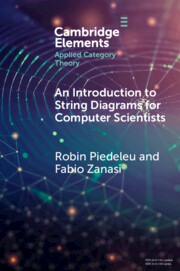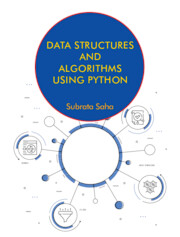Refine search
Actions for selected content:
6974 results in Algorithmics, Complexity, Computer Algebra, Computational Geometry

An Introduction to String Diagrams for Computer Scientists
-
- Published online:
- 01 May 2025
- Print publication:
- 29 May 2025
-
- Element
-
- You have access
- Open access
- HTML
- Export citation

Data Structures and Algorithms Using Python
-
- Published online:
- 30 April 2025
- Print publication:
- 15 June 2023
-
- Textbook
- Export citation
Colouring random subgraphs
- Part of
-
- Journal:
- Combinatorics, Probability and Computing / Volume 34 / Issue 4 / July 2025
- Published online by Cambridge University Press:
- 28 April 2025, pp. 585-595
-
- Article
- Export citation
17 - Loading classical data
- from Part II - Quantum algorithmic primitives
-
- Book:
- Quantum Algorithms
- Published online:
- 03 May 2025
- Print publication:
- 24 April 2025, pp 255-269
-
- Chapter
-
- You have access
- Open access
- Export citation
23 - Multiplicative weights update method
- from Part II - Quantum algorithmic primitives
-
- Book:
- Quantum Algorithms
- Published online:
- 03 May 2025
- Print publication:
- 24 April 2025, pp 299-304
-
- Chapter
-
- You have access
- Open access
- Export citation
10 - Quantum linear algebra
- from Part II - Quantum algorithmic primitives
-
- Book:
- Quantum Algorithms
- Published online:
- 03 May 2025
- Print publication:
- 24 April 2025, pp 188-209
-
- Chapter
-
- You have access
- Open access
- Export citation
Part I - Areas of application
-
- Book:
- Quantum Algorithms
- Published online:
- 03 May 2025
- Print publication:
- 24 April 2025, pp 1-3
-
- Chapter
-
- You have access
- Open access
- Export citation
Frontmatter
-
- Book:
- Quantum Algorithms
- Published online:
- 03 May 2025
- Print publication:
- 24 April 2025, pp i-iv
-
- Chapter
-
- You have access
- Open access
- Export citation
Preface
-
- Book:
- Quantum Algorithms
- Published online:
- 03 May 2025
- Print publication:
- 24 April 2025, pp ix-xiv
-
- Chapter
-
- You have access
- Open access
- Export citation
16 - Quantum adiabatic algorithm
- from Part II - Quantum algorithmic primitives
-
- Book:
- Quantum Algorithms
- Published online:
- 03 May 2025
- Print publication:
- 24 April 2025, pp 250-254
-
- Chapter
-
- You have access
- Open access
- Export citation
18 - Quantum linear system solvers
- from Part II - Quantum algorithmic primitives
-
- Book:
- Quantum Algorithms
- Published online:
- 03 May 2025
- Print publication:
- 24 April 2025, pp 270-275
-
- Chapter
-
- You have access
- Open access
- Export citation
25 - Basics of fault tolerance
- from Part III - Fault-tolerant quantum computing
-
- Book:
- Quantum Algorithms
- Published online:
- 03 May 2025
- Print publication:
- 24 April 2025, pp 314-319
-
- Chapter
-
- You have access
- Open access
- Export citation
19 - Quantum gradient estimation
- from Part II - Quantum algorithmic primitives
-
- Book:
- Quantum Algorithms
- Published online:
- 03 May 2025
- Print publication:
- 24 April 2025, pp 276-280
-
- Chapter
-
- You have access
- Open access
- Export citation
7 - Solving differential equations
- from Part I - Areas of application
-
- Book:
- Quantum Algorithms
- Published online:
- 03 May 2025
- Print publication:
- 24 April 2025, pp 111-129
-
- Chapter
-
- You have access
- Open access
- Export citation
Appendix - Background, conventions, and notation
-
- Book:
- Quantum Algorithms
- Published online:
- 03 May 2025
- Print publication:
- 24 April 2025, pp 332-345
-
- Chapter
-
- You have access
- Open access
- Export citation
24 - Approximate tensor network contraction
- from Part II - Quantum algorithmic primitives
-
- Book:
- Quantum Algorithms
- Published online:
- 03 May 2025
- Print publication:
- 24 April 2025, pp 305-310
-
- Chapter
-
- You have access
- Open access
- Export citation
26 - Quantum error correction with the surface code
- from Part III - Fault-tolerant quantum computing
-
- Book:
- Quantum Algorithms
- Published online:
- 03 May 2025
- Print publication:
- 24 April 2025, pp 320-324
-
- Chapter
-
- You have access
- Open access
- Export citation
21 - Quantum tomography
- from Part II - Quantum algorithmic primitives
-
- Book:
- Quantum Algorithms
- Published online:
- 03 May 2025
- Print publication:
- 24 April 2025, pp 286-290
-
- Chapter
-
- You have access
- Open access
- Export citation
6 - Breaking cryptosystems
- from Part I - Areas of application
-
- Book:
- Quantum Algorithms
- Published online:
- 03 May 2025
- Print publication:
- 24 April 2025, pp 98-110
-
- Chapter
-
- You have access
- Open access
- Export citation
11 - Hamiltonian simulation
- from Part II - Quantum algorithmic primitives
-
- Book:
- Quantum Algorithms
- Published online:
- 03 May 2025
- Print publication:
- 24 April 2025, pp 210-224
-
- Chapter
-
- You have access
- Open access
- Export citation









